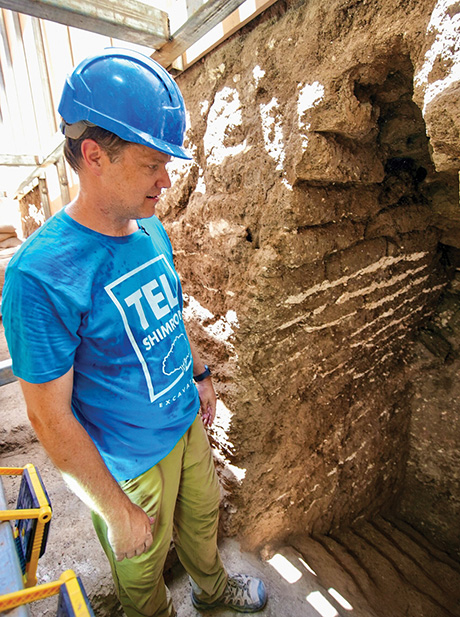
COURTESY EYECON / TEL SHIMRON EXCAVATION
Archaeologists excavating at Tel Shimron in northern Israel were astonished to discover a corbel-vaulted passage-way dating to the Middle Bronze Age (c. 2000–1550 BCE). This construction technique, in which layered bricks are stacked in an inward-stepped fashion to create a gradually narrowing ceiling, is well known from sites in Mesopotamia, but Shimron’s corbelled passageway is the earliest example of such architecture ever discovered in the Levant.
“A fully preserved mudbrick-built passageway with this type of corbelled vault is without parallel,” said excavation co-director Mario Martin. “Such structures almost never survive.”
Impressive monumental architecture abounds at Tel Shimron, which was the center of a prominent Middle Bronze Age kingdom known as Sham-anu. But this new discovery holds special significance. The vaulted passage “fills an important gap in the history of architecture in this region,” said excavation co-director Daniel Master, who identified it as an extraordinary example of Mesopotamian mudbrick technology.
Archaeologists excavating at Tel Shimron in northern Israel were astonished to discover a corbel-vaulted passage-way dating to the Middle Bronze Age (c. 2000–1550 BCE). This construction technique, in which layered bricks are stacked in an inward-stepped fashion to create a gradually narrowing ceiling, is well known from sites in Mesopotamia, but Shimron’s corbelled passageway is the earliest example of such architecture ever discovered in the Levant. “A fully preserved mudbrick-built passageway with this type of corbelled vault is without parallel,” said excavation co-director Mario Martin. “Such structures almost never survive.” Impressive monumental architecture abounds at Tel Shimron, which was the […]